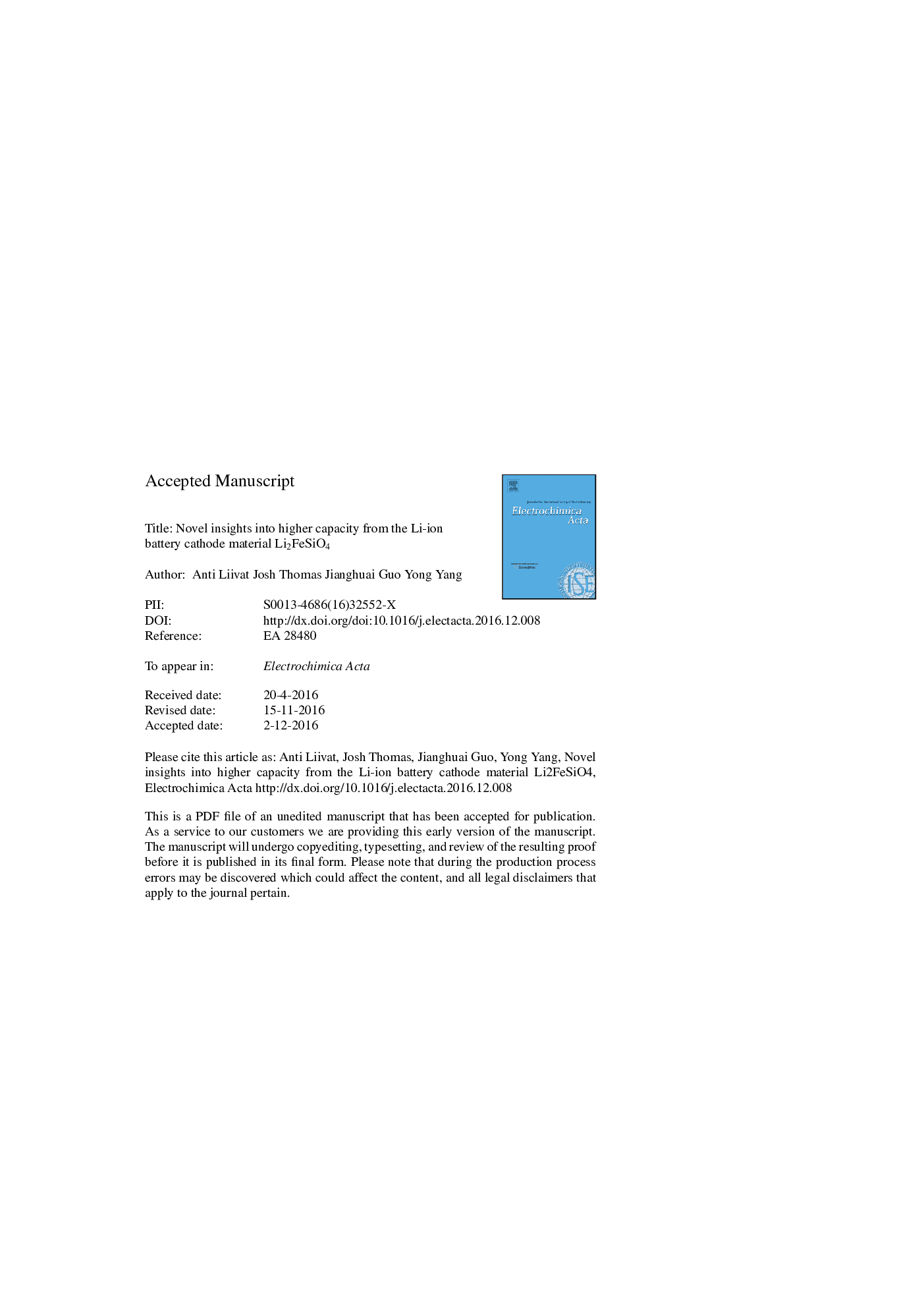| Article ID | Journal | Published Year | Pages | File Type |
|---|---|---|---|---|
| 4767502 | Electrochimica Acta | 2017 | 18 Pages |
Abstract
A highly reactive composite cathode material incorporating nano-particles of the popular Li-ion battery cathode material Li2FeSiO4 (LFS) is here studied to probe the activation of the controversial Fe3+/Fe4+ redox couple in exploiting the second Li-ion in the formula unit - for use in rechargeable Li-ion batteries. A novel form of in situ Mössbauer spectroscopy is used to monitor the oxidation state of the Fe-ions in symmetric LFS || LFS cells. This is based on mapping the poorly resolvable Mössbauer spectra from the expected Fe3+/Fe4+ redox couple in the working electrode onto the highly resolvable Fe2+/Fe3+ spectra from the counter electrode. Comparison of such data from half-delithiated Li(1)Fe3+SiO4 || Li(1)Fe3+SiO4 and almost lithium-free “Li(0)Fe4+SiO4 || Li(0)Fe4+SiO4” symmetric cells is demonstrated - to distinguish the electrode reactions from the those involving the electrolyte. Lithium is shown to cycle reversibly in the symmetric cells. However, a large proportion of the cycled lithium (â¼70%) does not derive from the bulk of the electrodes, but is rather a result of high-V electrolyte degradation, where charge balance is maintained by leaching lithium from the electrolyte and inserting it into the electrodes.
Related Topics
Physical Sciences and Engineering
Chemical Engineering
Chemical Engineering (General)
Authors
Anti Liivat, Josh Thomas, Jianghuai Guo, Yong Yang,
